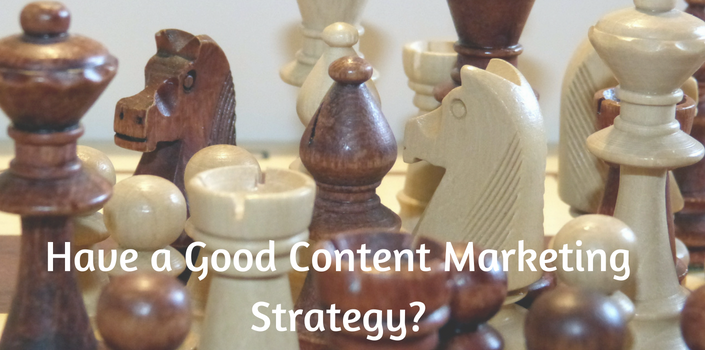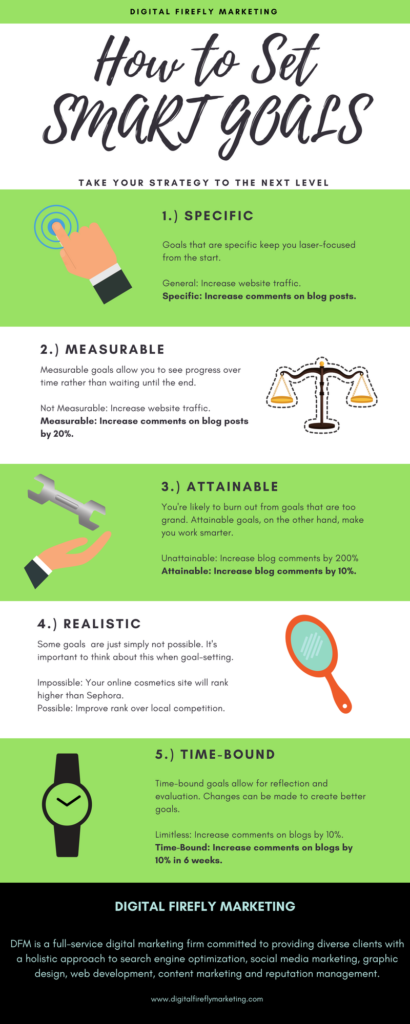Using Analytics To Develop Content Marketing Strategy

Analytics are nothing short of intimidating. That said, they are necessary. After all, crafting online content isn’t just about throwing words on a page. It’s about providing valuable information that generates benefits. Today we’re breaking down how to approach content marketing strategies using analytics so that your work is valuable.
Your Content Marketing Strategy Needs Analytics
It’s really easy to write bad content. Many businesses create blogs that should never see the light of day. Why do people do this? Because they haven’t developed content marketing strategies the same way they do for search engine optimization and social. They haven’t set goals or looked at data.
When brands think about SEO the goal is clear: to use keywords to rank better in Google. Social media posts are crafted with the goal of engagement and shares in mind. Few people do the same sort of big picture thinking when it comes to content. Instead, they just worry about making sure to do it. Content marketing is hard. But spending time to create goals makes it better. Today we’re sharing three steps to setting and monitoring content marketing goals using analytics. Sounds scary, but adding these to your current digital marketing strategy is likely to help you improve.
Step 1: Setting Content Marketing Goals
Goal-setting gives your content marketing strategy clear direction. But what types of goals should you set for your content? There are a few types—pick the ones that work for you. If you have not set goals like these, start with setting one and working through our process a few times. You’ll start to modify before you know it.
At Digital Firefly Marketing we like to set SMART goals. These are goals that are specific, measurable, attainable, realistic and time-restrained. You can learn more about SMART goals in this post we wrote for a client.
Engagement. That’s right. Engagement isn’t just for social media. Creating thought-provoking, valuable content can get conversations started in the comments making your brand approachable. Try not to simply end a blog with “what do you think?” or a closed question (“did you find this helpful?”) but instead, ask readers about their experience. For example, if you’re writing about travel ask readers to share the most important thing they learned on a recent trip.
Build Awareness & Loyalty. Your brand stands for something. Get that in people’s heads by developing content that connects you with specific products and services. Use your name and tagline if you have one. While you should feature other influencers and offer great outside resources, you want to use your platform to get people to equate you with what they need.
Education. Use your blog as a place to teach people about specific products, introduce them to trends they should be aware of or help them through a process in your industry. People Google questions they have and if you’re a good resource they’ll come back to you. They’ll also share your content.
Wait, What About Traffic?
Traffic is a metric that is valuable but creating content for the purpose of getting clicks often backfires and leads to a higher bounce rate. We’ll talk about this more in a later step.
Step 2: Set A Baseline
Once you set a goal you have to know where you are. That’s the only way to monitor improvement. Let’s say you decide you want to have customers and potential customers interact on your blog. A good goal would be: In October we’ll see an increase in blog comments of at least 10%.
You now know your starting point and from there you can figure out where you need to go. The analytics here are simple: just count the comments. But it’s not always so easy, and that leads us to step 3.
Step 3: Dig Into Analytics
Maybe you want to increase educational content that is valuable to readers. Notice the caveat “that is valuable”. Creating educational content for the sake of educational content just doesn’t work. Look through the content you’ve created in the last year that is educational. Then go into your analytics program of choice and look at the top 25 or 50 blogs. Which of the educational ones are doing well? Which are ignored?
For this, you have to think about the analytics to measure. Clicks? Meh. Clicks are great when people stay on a page but when measuring value, time on page is more important. Users staying on site to check out other links is also a good indicator. Check out the bounce rate on the educational posts—the lower the better.
Step 4: Use Insights to Drive Your Content Marketing Strategy
Once you reach the time limit in a goal compare the analytics to your baseline. Use these to decide how to go after your goals. Looking at the goal of increasing engagement, increase the likelihood of comments by studying posts with the most and mimicking what gets people talking. Strategize and develop more valuable educational posts by studying the ones that have most time-on-page and creating content that branches from this. It’s never a bad idea to take a popular piece and write about a specific area going much deeper—be sure to link between the two so that your readers can easily find both.

Final Thoughts
Analytics and goal-setting should be the major components of a content marketing strategy. Set goals and use analytics to see whether or not you’re making progress. Just always remember to make your central focus the creation of good content. Not sure where to start in revamping your content strategy? Why not head get a free content audit from Digital Firefly Marketing?
